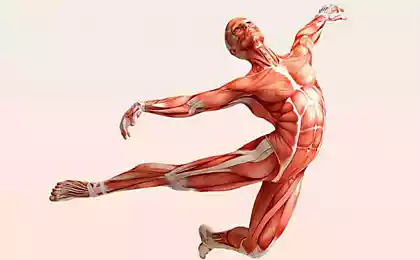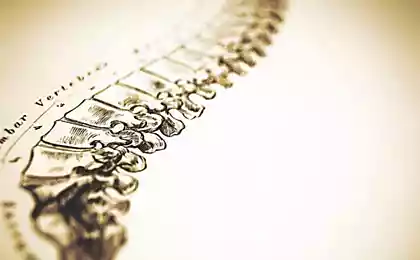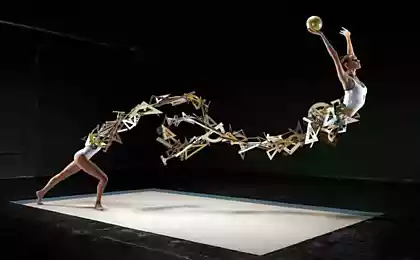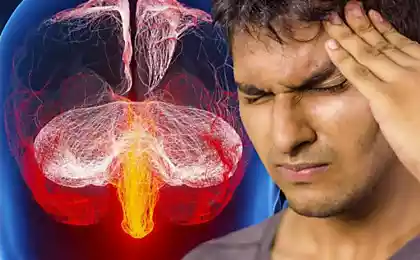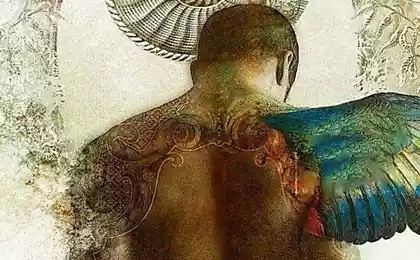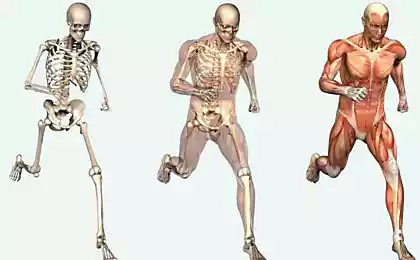479
The basic principles of OSTEOPATHY
The first principle, formulated by the founder of osteopathy, Andrew Taylor still, says: "The body is a single system».
All the organs and body parts are linked anatomically and functionally. Anatomical connection provides fascia – epithelial connective tissue covering all the muscles, ligaments, vessels, nerves, organs, etc. The fascia is divided in 3 level depth:
Seventy six million three hundred seventy three thousand seven hundred fifty one
Anatomical unity is also expressed in the regional relations of the organs.
Second principle osteopathy says: "Structure governs function and function governs structure». This means that if you break the position of a vertebra or the body (it shifted) that is restructured, it will disrupt their function (for movement of the vertebra, the work for organ), which would entail violations in the adjacent and distant parts of the body. So, disrupted the movement of a vertebra may cause a compensatory hypermobility at other levels of the spine with a protective spasm of the back muscles. Spasm of the muscles of the back can pinch the venous outflow from paravertebral tissues to accumulate fluid, there will be swelling. Swelling may compress the exiting spinal nerves, causing neurological disorders in the areas that these nerves control – from sensory disturbances and pain, until autonomic disorders of function of various organs. That's such a long chain of osteopathic lesions is obtained.
As for the impact of function on structure – it is known that the body that is very active or is subjected to a load changes its form, becoming larger (hypertrophy), denser. This may in turn change the position of the body (or bone structure) in the body – there will be omission of the authority or develop another change for example offset, overgrown "stone" on the legs of women who wear high heels and even increase the workload on the bones of the foot.
The third principle: "Life is movement». In our body everything is moving – the blood vessels, lungs and diaphragm in breathing, arms, legs, spine. Even the internal organs undergoing motion, stomach, intestines, reduces the gallbladder during digestion, pulsing brain. In the act of respiration move down the diaphragm "massages" the organs of the abdominal cavity "moving them" — to create in the thoracic cavity negative pressure "suction of air" the diaphragm moves in the direction of the abdomen, as though pushing away bodies that had been there. If disturbed movement in any part of the body, other areas have to compensate this movement, to maintain health, thereby wearing and suffering in turn.
Thirty two million six hundred sixty two thousand two hundred ninety nine
The fourth principle of osteopathy: "the Artery and nerve must function".If food is violated is sufficient inflow or outflow of blood to the organ is not happening – the body begins to suffer, his work is disturbed, illness occurs. To disrupt the work of the blood supply may be due to muscle spasms, displacements of the vertebrae, bones, organs — perezhimaya vascular path and changing the movement of blood in them. This rule applies to the nervous system, when clamping of the ways in which the violation of the control over bodies and again suffers from their function.
The fifth principle of osteopathy: "Nervous system – the basis of integration".Central nervous system regulation is important for the entire body. If you suffer from the brain (and it may suffer when violations of the blood flow of free liquor current, the movement of the skull bones, craniosacral other problems) – broken operation of all systems of the body.
Also wondering: will these exercises teach your kids!
Saving disease it is VITAL to know about the flu and colds
Osteopathy recognizes the great opportunity of self-regulation body. The essence of the therapeutic work of the osteopath is often just to "help" the body in removing some of the spasms and displacements, all the rest of the body is "complete" yourself.published
Source: vk.com/wall-23903469?w=wall-23903469_2528
All the organs and body parts are linked anatomically and functionally. Anatomical connection provides fascia – epithelial connective tissue covering all the muscles, ligaments, vessels, nerves, organs, etc. The fascia is divided in 3 level depth:
- surface – covers the muscles, ligaments creates,
- deep internal organs,
- the deepest – Dura – covers and protects the brain and spinal cord.
Seventy six million three hundred seventy three thousand seven hundred fifty one
Anatomical unity is also expressed in the regional relations of the organs.
- If "bad" aperture, it spazmirovannah, it will be "bad" and the liver, stomach, spleen, intestines — as they will put pressure trapped in the diaphragm.
- If spazmirovannah capsule of the kidneys will suffer muscle in which the kidney lies in the iliac-psoas muscles, the thrust of which spread to the sacroiliac joint (the joint between the sacrum and the pelvic bone, the place of "bones" that ache just below the lumbar), the lumbar spine and other structures.
- If damaged foot, broken all the mechanics of walking, it changes to compensate (which would not fall!) pelvic and lumbar region and other parts of the spine up to the neck.
- If disturbed secretion of bile will suffer digestion and intestinal peristalsis – constipation.
- If the kidneys do not work well – it will be fluid retention, inadequate release of hormones of the adrenal glands – spasm of blood vessels and, as consequence, rise in blood pressure.
Second principle osteopathy says: "Structure governs function and function governs structure». This means that if you break the position of a vertebra or the body (it shifted) that is restructured, it will disrupt their function (for movement of the vertebra, the work for organ), which would entail violations in the adjacent and distant parts of the body. So, disrupted the movement of a vertebra may cause a compensatory hypermobility at other levels of the spine with a protective spasm of the back muscles. Spasm of the muscles of the back can pinch the venous outflow from paravertebral tissues to accumulate fluid, there will be swelling. Swelling may compress the exiting spinal nerves, causing neurological disorders in the areas that these nerves control – from sensory disturbances and pain, until autonomic disorders of function of various organs. That's such a long chain of osteopathic lesions is obtained.
As for the impact of function on structure – it is known that the body that is very active or is subjected to a load changes its form, becoming larger (hypertrophy), denser. This may in turn change the position of the body (or bone structure) in the body – there will be omission of the authority or develop another change for example offset, overgrown "stone" on the legs of women who wear high heels and even increase the workload on the bones of the foot.
The third principle: "Life is movement». In our body everything is moving – the blood vessels, lungs and diaphragm in breathing, arms, legs, spine. Even the internal organs undergoing motion, stomach, intestines, reduces the gallbladder during digestion, pulsing brain. In the act of respiration move down the diaphragm "massages" the organs of the abdominal cavity "moving them" — to create in the thoracic cavity negative pressure "suction of air" the diaphragm moves in the direction of the abdomen, as though pushing away bodies that had been there. If disturbed movement in any part of the body, other areas have to compensate this movement, to maintain health, thereby wearing and suffering in turn.
Thirty two million six hundred sixty two thousand two hundred ninety nine
The fourth principle of osteopathy: "the Artery and nerve must function".If food is violated is sufficient inflow or outflow of blood to the organ is not happening – the body begins to suffer, his work is disturbed, illness occurs. To disrupt the work of the blood supply may be due to muscle spasms, displacements of the vertebrae, bones, organs — perezhimaya vascular path and changing the movement of blood in them. This rule applies to the nervous system, when clamping of the ways in which the violation of the control over bodies and again suffers from their function.
The fifth principle of osteopathy: "Nervous system – the basis of integration".Central nervous system regulation is important for the entire body. If you suffer from the brain (and it may suffer when violations of the blood flow of free liquor current, the movement of the skull bones, craniosacral other problems) – broken operation of all systems of the body.
Also wondering: will these exercises teach your kids!
Saving disease it is VITAL to know about the flu and colds
Osteopathy recognizes the great opportunity of self-regulation body. The essence of the therapeutic work of the osteopath is often just to "help" the body in removing some of the spasms and displacements, all the rest of the body is "complete" yourself.published
Source: vk.com/wall-23903469?w=wall-23903469_2528
